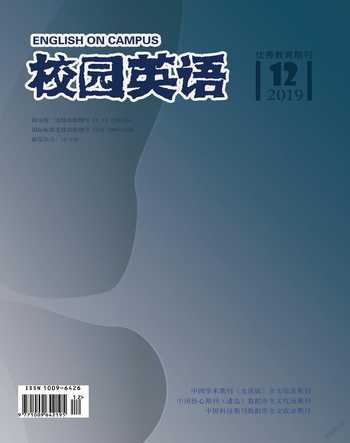从功能对等角度谈双关语的英汉翻译
【Abstract】Nowadays, television programs are crucial for information study and exchange worldwide. Since one of the distinctive features of the American TV series Friends is its humorous dialogues, the research target of this paper is the pun in the subtitling of Friends for its plenty of examples to explore. Therefore, this paper makes a deep analysis of some representative puns in Friends under functional equivalence theory, as well as a little contribution to cross-cultural communication.
【Key words】pun; functional equivalence theory; English-Chinese translation
【作者簡介】徐滢,上海师范大学。
Ⅰ. Introduction
People are gradually getting familiar with more foreign TV programs due to their strong desire and need to know the outside world. As a vital part in TV programs, subtitling helps the audience to have a better understanding of the plot. Therefore, this paper is to improve mutual learning and understanding between people from two different cultures.
Ⅱ. Theoretical Frameworks
2.1 The Definition of Pun
According to The Oxford English Dictionary, pun is defined as the use of a word in such a way as to suggest two or more meanings or different associations, or the use of two or more words of the same or neatly the same sound with different meanings, so as to produce a humorous effect. (1989:832)
2.2 The Definition of Functional Equivalence Theory
Eugene A. Nida puts forward his interpretation of functional equivalence in his Language and culture: Context in Translating (2001:87): a term used to refer to the type of equivalence reflected in a TT which seeks to adapt the function of the original to suit the specific context in and for which it was produced.
Ⅲ. Pun Translation in Friends under Functional Equivalence Theory
3.1 Lexical Equivalence
Example: Phoebe: Hey, you guys, you know what Larry would say? He would say, “See you ladle.”
菲比:你们知道莱瑞会怎么回答吗?他会说“勺后见。”
In this example, Danny just borrows a ladle from Monica and Rachel’s apartment. After he leaves, Phoebe says that because “See you later.” and “See you ladle.” sound very alike. The humor arises. The translator also shows the similar pronunciation by “稍后见” and “勺后见” in Chinese translation, so it should be considered as a successful translation.
3.2 Sentence Equivalence
Example:
Joey: What’s wrong buddy?
Ross: Someone at work ate my sandwich!
Chandler: Well, what did the police say?
喬伊:你怎么了,哥们?
罗斯:有同事偷吃了我的三明治!
钱德勒:警察怎么说?
Ross has been in a bad mood because of his marriage failures and troubles at work. He almost goes nuts when someone eats his sandwich, which he thinks is the only good thing going on in his life. But Chandler thinks it’s no big deal and teases him by asking what the police says. “偷吃了” shows the effect of the past action on Ross’s sandwich and achieves sentence equivalence.
3.3 Stylistic Equivalence
Example:
Monica: Say good-bye to sore muscles!
Chandler: Good-bye muscles!
莫妮卡:跟酸痛肌肉说再见吧!
钱德勒:再见了肌肉!
Monica brags about her massages and proudly tells Chandler to say goodbye to sore muscles. But she is doing extremely hard and Chandler is gasping in pain. So he says goodbye to “muscles” instead of “sore muscles”, which gives a satire effect. The Chinese subtitling keeps the same style as the English subtitling.
Ⅳ. Conclusion
Foreign television programs enrich people’s daily life and keep us closer to a variety of cultures around the world, so this paper lays an emphasis on the pun in the subtitling of Friends and pun’s classification in terms of four aspects of Nida’s theory. This paper is just a preliminary study on puns and hopefully it will shed light upon the research of pun translation. So further and deeper researches on pun translation are needed.
References:
[1]The Oxford English Dictionary[M]. Oxford: Clarendon Press,1989, Vol.XII:832.

